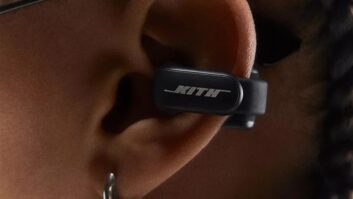NEW YORK – Although consumers are readily experimenting with different shopping formats and venues, their ultimate vote — their wallets — still goes to brick-and-mortar retail.
That’s the conclusion of a new study by the Consumer Electronics Association (CEA), which was presented by the trade group’s industry analysis senior manager Chris Ely during last month’s CEA Research Summit. The day-long series of seminars and guest panels, held here, also served as the kickoff to CE Week.
Despite the growth of online and mobile shopping, as “people try to see what works for them,” physical stores remain the overwhelming channel of choice when purchasing and even researching electronics devices, Ely said.
“People still prefer human interaction,” he observed.
Case in point: mobile shopping. Despite the uproar over showrooming, less than 1 percent of consumers overall use their mobile devices while in brick-andmortar stores, the research showed, due perhaps to poor connectivity or background noise. Those who never use mobile devices in-store tend to be older and/or from lower income households, Ely said.
Of those who do shop via handhelds, most (57 percent) will direct their browsers from a mobile-enhanced page to a retailer’s standard website due to the greater information they generally offer and consumers’ higher comfort level with the more familiar format.
Shoppers say they use retailers’ websites to check inventory availability, browse or compare products, obtain shipping rates and delivery times, and to receive assistance through via email or live chats. All told, 62 percent of shoppers will visit a retailer’s website in advance of going to the physical store.
And go to stores they do. Some 76 percent said they prefer brick-and-mortar showrooms for the sales assistance or ease of making a return, while 60 percent seek post-purchase customer service. A nearly equal percentage of shoppers (59 percent) believe websites and physical stores are equivalent on price.
When it comes to CE, 73 percent of shoppers buy their electronics devices at physical stores and 72 percent use showrooms to browse and research their purchases.
Consumers said their top activities at brick-andmortar stores include:
• making a return, cited by 83 percent of respondents;
• testing a product (83 percent);
• purchasing a product (81 percent);
• resolving a problem with a purchase (76 percent); and
• viewing a product demonstration (75 percent).
Other features of physical stores enjoyed by CE shoppers include on-shelf product reviews, cited by 68 percent; having items shipped home (67 percent); and the ability to add items to a wish list (45 percent).
Another 86 percent said they take advantage of the in-person assistance that brick-and-mortar affords, including 77 percent who consult with associates instore before buying a product and 71 percent who seek their advice after making the purchase.
In contrast, 53 percent of respondents said they buy CE from standard websites, 18 percent make purchases from mobile-optimized websites, and 15 percent use mobile apps to place orders.
That’s not surprising given that CE and majaps are the second-largest sales category online, behind only clothing and shoes, Ely said, citing data from the U.S. Census Bureau and the National Retail Federation (NRF). What’s more, some 36 percent of all computers and home-office products are sold online, as are a quarter of all cellphones and A/V products, according to the Stevenson Company’s TraQline data.
But despite fears that showrooming is siphoning sales from physical stores, only 17 percent of CE shoppers said they compare prices using a smartphone, while the vast majority (70 percent) said they don’t use smartphones to shop.
Of the 67 percent who research and browse CE products on standard websites, 74 percent compare prices, 72 percent seek product information, and 66 percent determine product availability.
Their least concerns when researching online are shipping rates (29 percent), compatible accessories (27 percent), and warranty information (26 percent).
For mobile users, access to coupons and other incentives is considered the most useful feature of shopping with smartphones and tablets (75 percent), followed by scanning barcodes for product information and reviews (68 percent and 67 percent, respectively).













